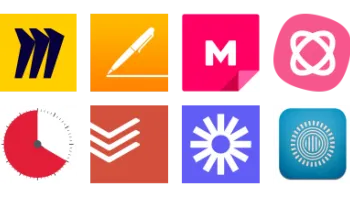Take a look inside 8 images
GradeCam
Pros: It's a real time-saver for grading objective tests, performing ongoing assessments, and monitoring mastery of standards over time.
Cons: The site times out easily, and most features are available only with paid accounts.
Bottom Line: This work-from-anywhere tool is for teachers looking for a fast and convenient way to assign, assess, and monitor student performance.
The best use for GradeCam will likely involve accessing all of the paid features through a subscription. Use the program for daily warm-ups, exit tickets, or quick checks for understanding during a unit or lesson. The opportunity for students to complete short assessments online and receive immediate feedback in the form of scores and correct answers can make a teacher's job easier while also providing valuable feedback. Collaborate with colleagues to make lighter work; for example, an entire academic department could create common assessments. Teachers can link questions to custom or state standards and share assessments with one another. GradeCam can also read students' handwriting -- up to 10 lines of it -- and either compare it with teacher keys or allow teachers to grade it once it's scanned in.
If you prefer paper tests, they're easy to scan for scoring, and teachers can transfer grades into an online gradebook with one touch. Teachers or administrators could share and analyze the data to inform future instruction or evaluate how well students might be meeting standards. However, if funds are tight, the free plan is still worth a look. Use the 10-question quizzes for ongoing assessment and instant feedback. Kids will enjoy scanning their papers or getting instant feedback on their device as they finish assignments.
GradeCam allows teachers to use their device's camera to instantly scan and grade multiple-choice, fill-in, or short answer assessments. In short, it's a new take on the old Scantron machine but with a number of more useful features. Easily import students via a CSV file or by syncing with Google Classroom. From there, you can create and grade assignments, scan responses, and view reports.
With a free account, teachers can make 10-question answer keys, upload classes to create personalized test forms, scan tests, and get instant reports and data analysis. Additional features, such as handwriting recognition, customizable reports, and observation-type assessments, are available through paid individual, schoolwide, or district accounts. With the paid plans, the number of test items expands to 1,000. Additionally, teachers can transfer data to nearly any online gradebook and create standards-based evaluations. The site walks users through setup and offers numerous tutorials, a blog, a community support page, and a strong social media presence.
GradeCam is a great way to quickly grade objective assessments and get instant reports to monitor student progress. The ability for teachers and students to see test results immediately provides a built-in method to check for understanding. This type of real-time feedback is very useful in helping students master certain concepts or standards as well as in helping educators inform future instruction. When students score their own assessments, they can ask questions to clarify their understanding of difficult content while the lesson is still fresh in their mind. Useful reports can help teachers see where individual students or groups of students are struggling and adjust their teaching accordingly. This includes demographic subgroup reporting, which teachers can use to identify and address achievement gaps among students.
It's important to note, however, that while GradeCam can be a big time-saver, it mostly promotes the use of objective assessments, so the depth of learning may be limited. There's a feature that will read a limited amount of student writing, but due to the likely variety of student responses, teachers will need to grade this separately. Nevertheless, students like instant feedback, and the tool may increase buy-in as well as effort. It also gives teachers quick feedback without the need to grade basic assessments -- one of the more tedious parts of the job. This can mean more time for developing curriculum, collaborating, and working directly with students to promote deeper learning.


















